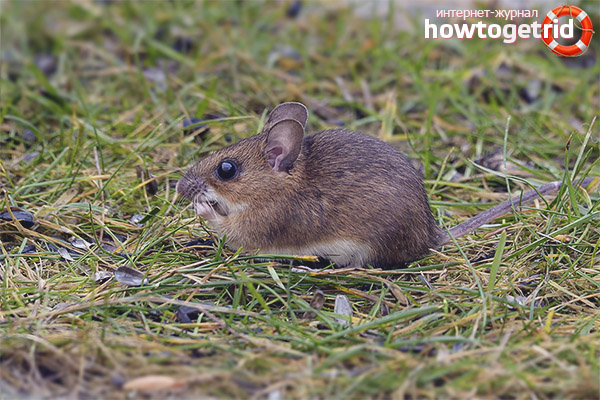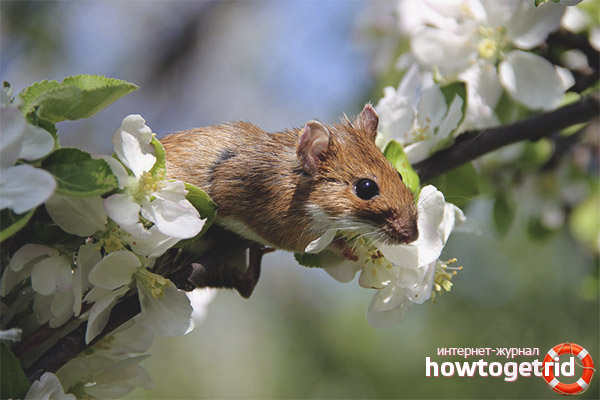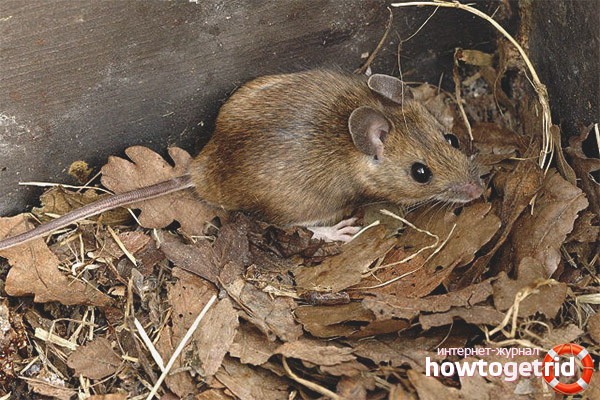The content of the article
Some at the sight of a mouse immediately fall into horror, while others this cute little animal causes indescribable delight. In this material we will consider a miniature representative who is called nothing more than a yellow-throated mouse. She is distinguished by her habits, ways of earning food, and the characteristics of communication with self-similar. Let's look at the main aspects associated with these animals so that you can make your own opinion.
Description
- This animal is quite small, it extends no more than 13 cm along the body. However, much more miniature members of the family are often found. In addition, the tail is also given about 13 cm. Often it is slightly longer than the body. These mice are famous for their large and thin ears, they reach 2 cm in height.
- The main characteristic of the variety is pigmentation. The fur is painted in an ocher, brown, red or brownish tone. On the back there is a black strip of black. The abdominal part is brightened, almost white, but dark outlines can be observed closer to the sides. On the chest there is a round or oval speck pigmented in yellow. Partly for this reason, the mouse was so called. In some cases, a ring of yellowish tone may be present on her neck.
- The format of the head is wedge-shaped, it is slightly larger than that of forest mice. Also in the lower part of the neck there are light outlines that are not found in other relatives. The tail and ears are elongated, these are also the main differences of the variety under discussion. It is these distinctive characteristics that made it possible to distinguish the yellow-necked representatives in a separate variety.
Habitat
- It cannot be said that individuals from this family are found everywhere, but they cannot be called rare either. To a greater extent, mice are widespread in mountain and forest bands, live in Europe, in the vastness of our country and nearby territories. A lot of family members in Ukraine. From the regions of Russia we single out the distribution in the Caucasus and Crimea. These animals love warm climatic regions, respectively, and choose the area taking into account their preferences. Found in the British Isles.
- These animals love larch, in particular oak groves. They can settle in the mixed zone, the main thing is that there is food and a suitable climate. Mice need larch. Animals do not leave their territory of distribution, because except for forests, they are not adapted to anything. If ordinary mice can live almost everywhere, then the yellow-necked representatives are not capable of this.
- Partly due to the addiction to larch zones, some places remain uninhabited, even though there is food there, but there are no broad larch trees. Many of the discussed individuals living in the Caucasus and the Carpathians in the summertime climb above forest level. Toward the end or middle of the warm pore, they can go down to feed themselves. In the winter, animals try to take shelter in residential or farm buildings.
Lifestyle
- Animals most of their existence are active at night. They can live in hollows, and at various heights. Some dig minks in the root system of trees; these tunnels reach 1.5 meters in depth. Which is enough for such small animals. Burrows are necessarily equipped with extended areas called chambers. In them, mice relax, raise offspring.
- Represented animals more often than all the rest of their relatives occupy the nests of birds and live in them.Here they bring stocks for the winter season, here they can breed (if there is no camera in the hole, or actually there is no hole). In some especially voracious rodents, the mass reserves can reach 5 kg. These individuals do not hibernate.
- Mice eat more seeds. They are stocked with acorns, nuts, maple, hazel, linden, etc. Also, some eat bush seeds. The menu includes seedlings and leaflets. Cultivated varieties of animals consume long before ripening.
Breeding
- It is noteworthy that the considered individuals are capable of bringing up to 4 broods per year. In this case, on average, about 6 cubs are born.
- After birth, the babies stay with their mother for a while. They reach puberty this year.
- Otherwise, the number of such individuals will directly depend on the yield of broad-leaved plants. Such mice die in large numbers in frosty and snowy winters.
Economic value
- Unfortunately, the presented individuals cause significant damage to crops. Such mice damage watermelons, carrots, tomatoes, potatoes, sunflowers and crops.
- Interestingly, some farmers were forced to stop planting oak due to the fact that rodents completely destroyed the sowing and young seedlings.
- Do not forget that individuals act as prey for fur animals. Therefore, in this you can observe certain benefits.
- The problem still lies in the fact that the rodents under discussion suffer quite serious diseases in the form of leptospirosis, tick-borne encephalitis and tularemia.
Characteristics
- An interesting feature of such individuals is that populations that live closer to the south are much smaller, in contrast to animals that live west and north of the regions of Russia.
- Individuals living in the south side have a brighter and more pronounced color. She is also brown. Among other things, there are about 10 subspecies of the rodents in question.
- It is noteworthy that animals differ from other species of yellow-necked mice with a shorter tail. But it is longer than that of Daurian hamsters. In ancient times, the considered individuals reached enormous sizes.
- Otherwise, the number of such rodents is constantly changing. Many factors affect the number of individuals. Including the mouse population is highly dependent on weather conditions and climate. Currently, the number of rodents has decreased significantly, they are in the Red Book.
Interesting Facts
- This type of rodent, like most of these small animals, have a very fast metabolism. Because of this feature, they need a lot of food. The considered individuals have simply brutal appetite.
- At the sight of trouble, the mouse runs away and makes incredible long jumps. If we compare the length of the jump and the size of the body of a rodent, then we can say with accuracy that the presented animals jump further even than a kangaroo.
- Interestingly, if you put in a single cage forest and yellow-throated mice, the latter will kill the first and then eat them. However, in the wild, such species exist quite peacefully. They sometimes intersect, but do not show aggression towards each other.
Presented individuals were previously very common, in fact, they are pests of crops. However, rodents are currently in danger of extinction. The population of their species is influenced by various factors. In nature, the mice have enough opponents, and farmers also destroy them.












Submit